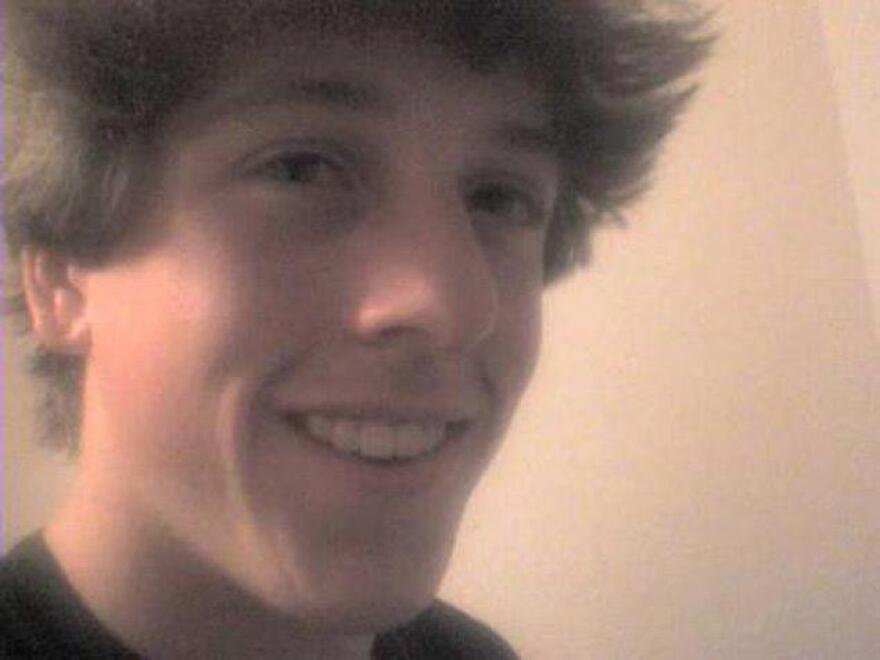AURORA, Colo. (AP) - A gunman in a gas mask barged into a crowded Denver-area theater during a midnight showing of the new Batman movie Friday, hurled a gas canister and then opened fire, killing 12 people and injuring at least 50 others in one of the deadliest mass shootings in recent U.S. history.
When the smoke began to spread, some moviegoers thought it was a stunt that was part of the "The Dark Knight Rises," one of the most highly anticipated films of the summer. They saw a silhouette of a person in the haze near the screen, pointing a gun at the crowd and then shooting.
"There were bullet (casings) just falling on my head. They were burning my forehead," Jennifer Seeger said, adding that the gunman, dressed like a SWAT team member, fired steadily, stopping only to reload.
"Every few seconds it was just: Boom, boom, boom," she said. "He would reload and shoot and anyone who would try to leave would just get killed."
The suspect was taken into custody near a car behind the theater and was identified by federal law enforcement officials as 24-year-old James Holmes.
Holmes was studying neuroscience in a Ph.D. program at the University of Colorado-Denver, university spokeswoman Jacque Montgomery said. Holmes enrolled a year ago and was in the process of withdrawing at the time of the shootings, Montgomery said.
Authorities gave no motive for the attack. The FBI said there was no indication of ties to any terrorist groups.
Police said 71 people were shot. Aurora police Chief Dan Oates said the suspect wore a gas mask, a ballistic helmet and vest as well as leg, groin and throat protectors. He said he had an AR-15 military-style, semi-automatic rifle, a shotgun and two pistols.
FBI agents and police used a hook and ladder fire truck to reach Holmes' apartment in Aurora, Oates said. They put a camera at the end of a 12-foot pole inside the apartment and discovered the unit was booby-trapped. Authorities evacuated five buildings as they tried to figure how to disarm the flammable and explosive material.
"It's something I've never seen before," Oates said.
At least 24 people were being treated at Denver-area hospitals, some of them for chemical exposure apparently related to canisters thrown by the gunman. Some of those hurt were children, including a 4-month-old baby, who was treated a hospital and released.
Police released a statement from Holmes' family: "Our hearts go out to those who were involved in this tragedy and to the families and friends of those involved."
The movie opened across the world Friday with midnight showings in the U.S. The shooting prompted officials to cancel the red-carpet premiere in Paris, with workers pulling down the display at a theater on the Champs-Elysees. Around the U.S., police and some movie theaters stepped up security for daytime showings of the movie, though many fans waiting in line said they were not worried about their safety.
It was the worst mass shooting in the U.S. since the Nov. 5, 2009, attack at Fort Hood, Texas. An Army psychiatrist was charged with killing 13 soldiers and civilians and wounding more than two dozen others.
In Colorado, it was the deadliest since the Columbine High School massacre on April 20, 1999, when two students opened fire in the Denver suburb of Littleton, killing 12 classmates and a teacher and wounding 26 others before killing themselves. Columbine High is about 12 miles from the theater.
Friday's attack began shortly after midnight at the multiplex theater.
The film has several scenes of public mayhem - a hallmark of superhero movies. In one scene, the main villain Bane leads an attack on the stock exchange and, in another, leads a shooting and bombing rampage on a packed football stadium. The gunman released a gas that smelled like pepper spray from a green canister, Seeger said. "I thought it was showmanship. I didn't think it was real," she said.
She said she began crawling toward an exit when she saw a girl of about 14 "lying lifeless on the stairs." She saw a man with a bullet wound in his back and tried to check his pulse, but "I had to go. I was going to get shot."
Witness Shayla Roeder said she saw a teenage girl on the ground bleeding outside the theater. "She just had this horrible look in her eyes. .... We made eye contact and I could tell she was not all right," Roeder said.
Police, ambulances and emergency crews swarmed on the scene after frantic calls started flooding the 911 switchboard. Officers came running in and telling people to leave the theater, Salina Jordan told the Denver Post. She said some police were carrying and dragging bodies. Hayden Miller told KUSA-TV that he heard several shots. "Like little explosions going on and shortly after that we heard people screaming," he told the station. Hayden said at first he thought it was part of a louder movie next door. But then he saw "people hunched over leaving theater."
















